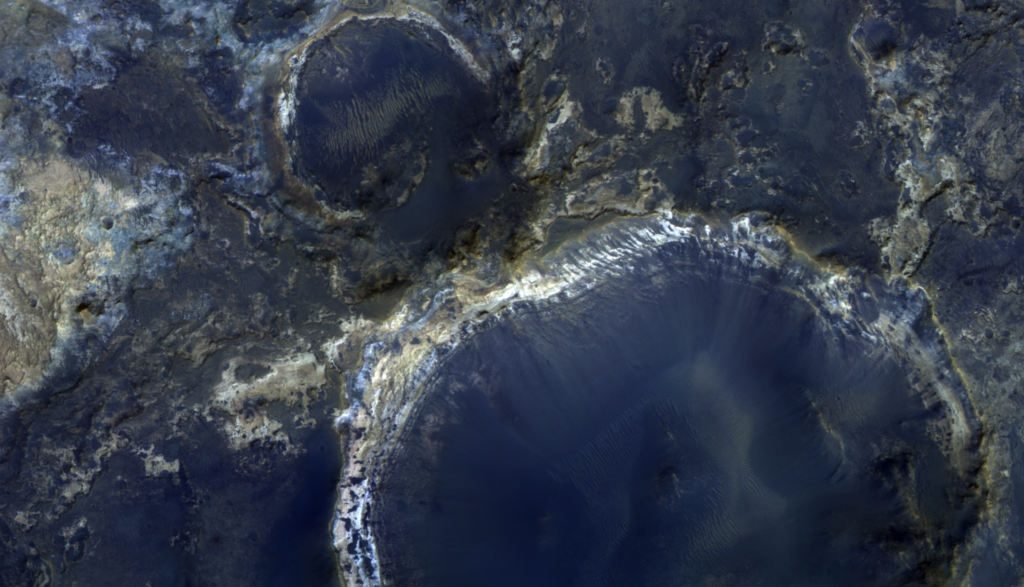Mars is not for nothing called the Red Planet. To the human eye, our neighbor in the Solar System looks like a reddish dot in the night sky. This is because the planet’s surface is rich in iron oxides and minerals. Martian soil and dust oxidize and eventually take on a distinctive reddish hue.

Instruments aboard the TGO spacecraft in orbit around Mars can capture many more colors than our eyes can see. This is clearly demonstrated by the image taken by its CaSSIS camera. It shows a surface area located in the Mawrth Vallis.
The metallic colors of this bright landscape tell a story of mineralogical diversity that began about 3.6 billion years ago. The area photographed by TGO is located south of the boundary where the southern uplands meet the northern plains of Mars. The yellow color corresponds to iron- and magnesium-rich clays. On top of these lie white and blue layers containing aluminum. The rest of the terrain is covered with dark, highly eroded material.
The Mawrth Vallis continues to intrigue scientists with its geologic complexity. Liquid water once flowed there, and this area was included in the list of the most promising places for landing the Rosalind Franklin rover. However, the specialists eventually chose a different location. But it is possible that another mission will land here in the future.
Earlier we told you about how frost formed on top of the famous Martian supervolcano Olympus.
According to ESA


